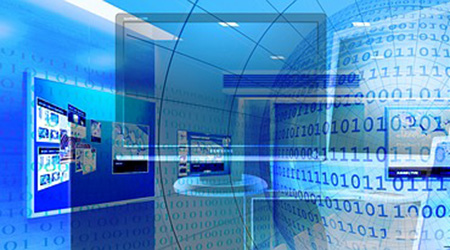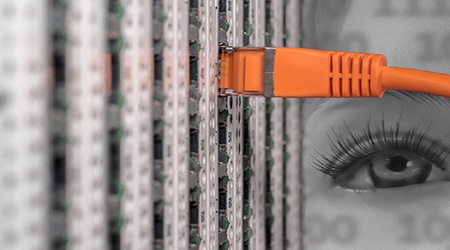Do you despise the term “Internet of Things” (IoT) as a buzzword? We don’t blame you. Along with its best buzzword-buddy “big data”, it’s a term that’s becoming infuriatingly ubiquitous in the tech world. However, with the OECD publishing the results of a 2015 study suggesting that the US now has at least 24.9 internet connected devices per every 100 inhabitants, it’s undeniable that no matter how you phrase it the devices we use day to day are becoming increasingly connected. And of course, that will generate a lot of data – whether you call this data ‘big’ or not is up to you.
With IoT becoming a more permanent part of our day-to-day lives, let’s take a look at IoT and how it may impact your backup strategy in future. Will you need to back up the office refrigerator any time soon? Let’s see.
So quickly, what is the IoT?

Put simply, the IoT refers to the devices in a home or office that connect to the internet or a local network. This includes the devices you’d expect, like computers and mobile devices; but what really defines the IoT is the wealth of other devices that are increasingly going online. Smart TV’s and game consoles aren’t too much of a leap of logic, but where things start to become complex are the more mundane appliances: air conditioning, ventilation and appliances like refrigerators and coffee machines.
Light bulbs, in fact, are an interesting example, as they may even be able to form their own Li-Fi based wireless network with which everything else could communicate in future.
Why bother connecting these devices to a network, you ask? Well, as with any other element of 21st century life it all boils down to making things a little more convenient. If you can have all aspects of a home or office environment managed centrally, with minimal to no human intervention, and make it responsive to changing conditions in real-time, then you’re not far off from the technology fueled utopia we’ve been dreaming about as a species for the last century or so.
Beyond the convenience of connected creature-comforts, the IoT also has huge potential for industries such as healthcare and infrastructure. Imagine if your pacemaker could remotely alert your nearest hospital of complications in real-time, before physical symptoms present themselves.
But while a world where everything in your workplace is connected and adaptive makes life easier on the surface, there are lots of things that need to be considered from a business standpoint.
Implications of the IoT for businesses

The biggest IoT concern for businesses is the same headache that arises with anything related to the internet — cyber-security. If more devices are connected to a network, that’s a lot more points of potential vulnerability through which your network could become compromised. What’s more, as Patrick Nelson points out in this article from Network World, your office refrigerator is much less likely to have gone through the stringent vulnerability testing than the software and hardware running in your server room, despite potentially being connected to the exact same network.
Wi-fi connected light bulbs, for example, have been publicly hacked for demonstrative purposes by security researchers already.
There’s also the issue of how much the IoT will expand the role requirements of IT staff – when everything from your air conditioning to your light-bulbs become an IT issue. How much extra strain will that place on staff resources? Patrick Nelson’s article also points out that patching the software running your IoT devices will be time consuming in an office environment, as well as vital to ensuring that security vulnerabilities are minimized.
The role of backups in an IoT world?

At the end of the day ‘big data’ is still data, and data will always need to be backed up. While the data collected by your office refrigerator will almost certainly never be considered mission-critical in the way that your SQL databases are, this could be an entirely different story depending on the device, and on your industry.
One industry where the IoT is becoming increasingly prevalent is healthcare – as we’re sure we don’t need to tell you, protecting any data related to medical issues is very serious business indeed. How the data transmitted to hospital servers from medical devices will be secured and protected, is something that will require a lot of thought and planning.
For the more mundane data being generated from your light bulbs or your office refrigerator, failing to back it up could mean losing an office ecosystem that people depend upon in the event of a systems crash. Re-configuring this environment from scratch would be a huge strain on your IT staff, which leaves them less time to focus on the more mission-critical aspects of your IT infrastructure.
So, the answer to the question we started with? Yes. In the future, you probably will need to backup your office refrigerator. Not to mention almost everything else in your workplace.
The IoT is not just a buzzword. It’s an inevitability.
Do you see the IoT wreaking havoc on business IT, or aiding it?
Leave your thoughts in the comments, tweet @BackupAssist or post to facebook.
Share this article, because like it or not IoT is coming.

4 thoughts on “An IoT Future: Backup the Office Refrigerator…?”
TLDR on the 43 page source document, but 24.9 internet connected devices per 100 US inhabitants seems absurdly low.
I read 7 per household in another study. My wife and I have almost 20 between the two of us.
1 internet connected device per 4 people in the US cannot be accurate. What am I missing?
Hi Rob, I’m Luke, a Content Marketer here at BackupAssist, and I wrote this article. Thanks for sharing your thoughts, and I have to absolutely agree with you – I thought that figure seemed low too! But the data is the data. Keep in mind that anecdotal data like the specific circumstances of you and your wife may not necessarily be representative of the broader US population. Also, in the OECD’s 2015 report that I drew that stat from (linked to in the article), they do specify that “…there are some limitations to the data. Not every device connected to the internet will respond to every request to identify itself.”
Regardless of how accurate that particular stat is, however, I think the point remains that the number of devices connected is increasing exponentially, and this is something that IT professionals will increasingly need to consider in a business context in the future. Thanks again for reading my article, and for taking the time to share your thoughts!